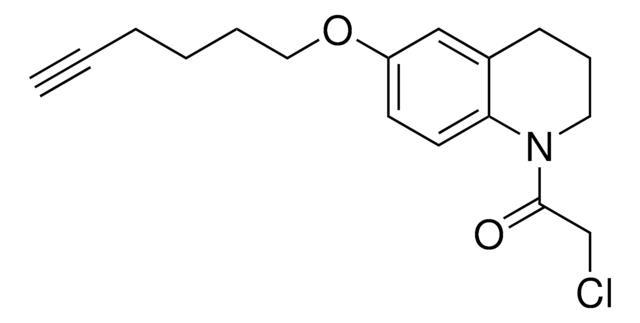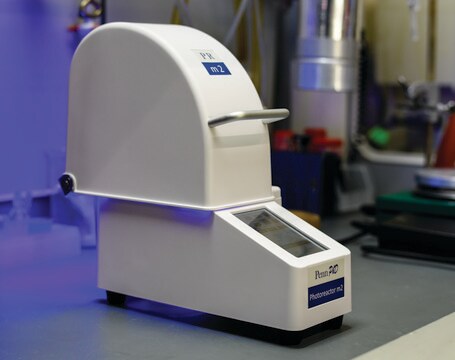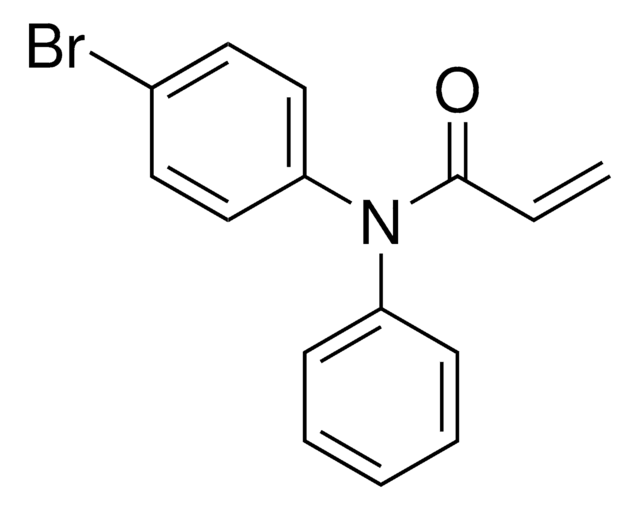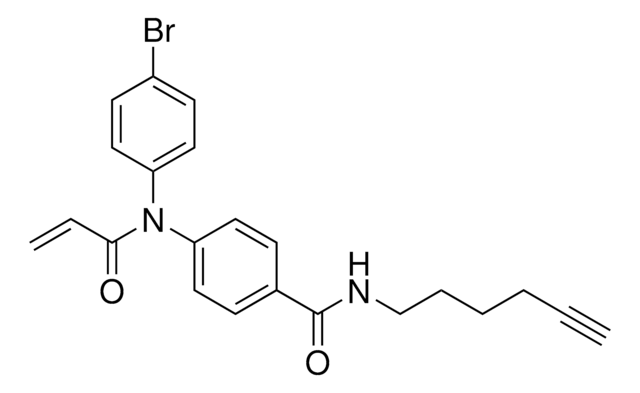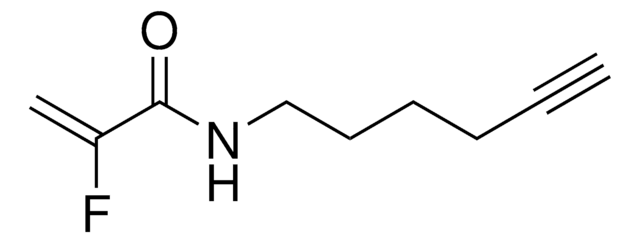おすすめの製品
アッセイ
≥95%
フォーム
powder
InChI
1S/C10H6ClF6NO/c11-4-8(19)18-7-2-5(9(12,13)14)1-6(3-7)10(15,16)17/h1-3H,4H2,(H,18,19)
InChI Key
LEYIUTOAQOUAFG-UHFFFAOYSA-N
アプリケーション
2-Chloro-1-(6-methoxy-1,2,3,4-tetrahydroquinolin-1-yl)ethan-1-one is a cysteine-reactive small-molecule fragment for chemoproteomic and ligandability studies for both traditionally druggable proteins as well as "undruggable," or difficult-to-target, proteins. This fragment electrophile, or "scout" fragment, can be used alone in fragment-based covalent ligand discovery or incorporated into bifunctional tools such as electrophilic PROTAC® molecules for targeted protein degradation as demonstrated by the Cravatt Lab for E3 ligase discovery.
その他情報
法的情報
PROTAC is a registered trademark of Arvinas Operations, Inc., and is used under license
関連製品
製品番号
詳細
価格
シグナルワード
Warning
危険有害性情報
危険有害性の分類
Eye Irrit. 2 - Skin Irrit. 2
保管分類コード
11 - Combustible Solids
WGK
WGK 3
引火点(°F)
Not applicable
引火点(℃)
Not applicable
適用法令
試験研究用途を考慮した関連法令を主に挙げております。化学物質以外については、一部の情報のみ提供しています。 製品を安全かつ合法的に使用することは、使用者の義務です。最新情報により修正される場合があります。WEBの反映には時間を要することがあるため、適宜SDSをご参照ください。
Jan Code
912654-100MG:
912654-BULK:
912654-VAR:
最新バージョンのいずれかを選択してください:
Péter Ábrányi-Balogh et al.
European journal of medicinal chemistry, 160, 94-107 (2018-10-16)
Targeted covalent inhibitors have become an integral part of a number of therapeutic protocols and are the subject of intense research. The mechanism of action of these compounds involves the formation of a covalent bond with protein nucleophiles, mostly cysteines.
De-Wei Gao et al.
Journal of the American Chemical Society, 140(26), 8069-8073 (2018-06-13)
Nucleophilic attack on carbon-based electrophiles is a central reactivity paradigm in chemistry and biology. The steric and electronic properties of the electrophile dictate its reactivity with different nucleophiles of interest, allowing the opportunity to fine-tune electrophiles for use as coupling
Keriann M Backus et al.
Nature, 534(7608), 570-574 (2016-06-17)
Small molecules are powerful tools for investigating protein function and can serve as leads for new therapeutics. Most human proteins, however, lack small-molecule ligands, and entire protein classes are considered 'undruggable'. Fragment-based ligand discovery can identify small-molecule probes for proteins
資料
Ligandability describes the propensity of a protein target to bind a small molecule with high affinity. It is a precursor to evaluating druggability, which requires more advanced translational pharmacological effects and drug-like properties in vivo.
ライフサイエンス、有機合成、材料科学、クロマトグラフィー、分析など、あらゆる分野の研究に経験のあるメンバーがおります。.
製品に関するお問い合わせはこちら(テクニカルサービス)
